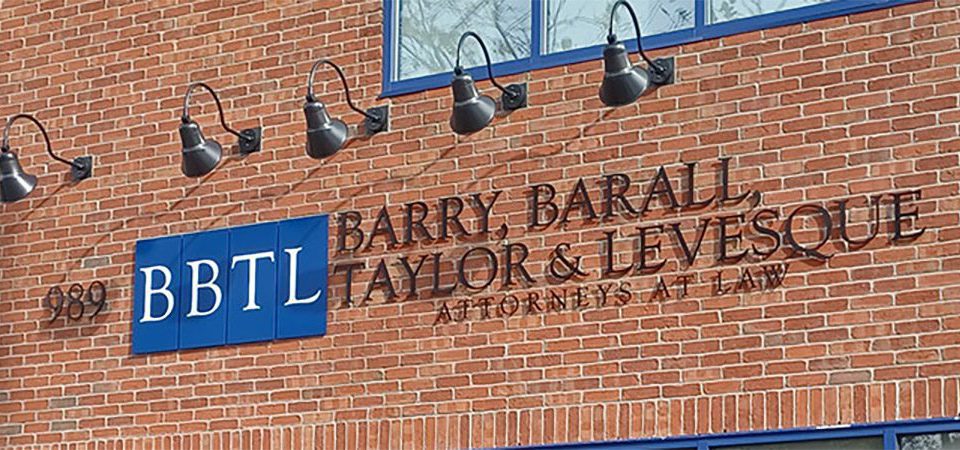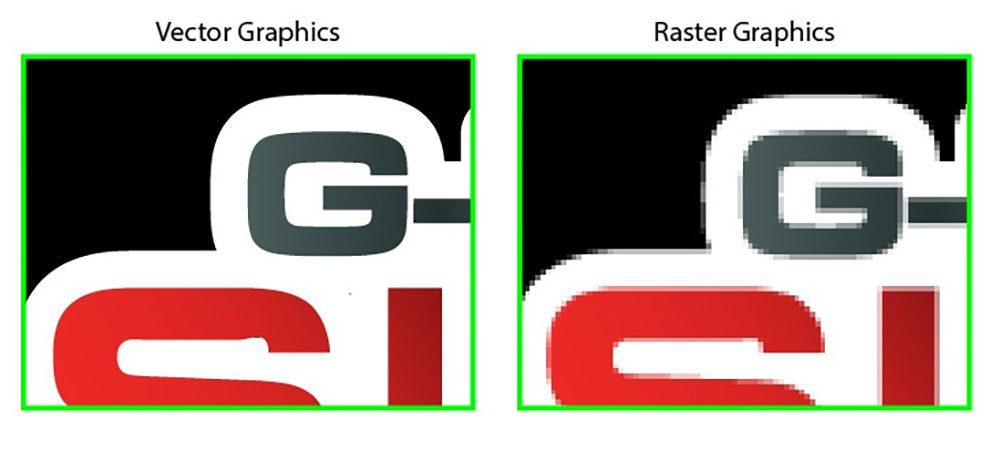As a sign company we produce products in a variety of different sizes using a range of different media options. Often times the equipment we use has specific file requirements. As a result one of the first questions we ask while consulting with our clients is simply: “Do you have this in a vector format?” It is not uncommon for the client’s follow up question to be “What is vector format?”
To answer that question we are going to compare the difference between Vector Images vs Raster Images and quickly explain the sources and purposes for these different file types.


What is a Raster Image?
To fully understand the importance of a vector image you must understand both file types. Raster images are the most common image file type you will commonly come across in our digital world. Two of the most common file types you will find in any image search on the internet will be PNG (Portable Network Graphics) or .png file extension, and JPEG (Joint Photographic Experts Group) or .jpg. Both of these file formats support file compression which helps in regards to reducing file size. PNG files are commonly found for web graphics, are limited to RGB Color formats, and can incorporate a transparent background. JPEG format is widely used in digital photography and can be either saved as RGB or CMYK color formats. The major thing that these file formats have in common are that they are pixel based.
Most people have a familiarity with pixel based imagery with current trends in technology. Its common to understand that the higher pixel density means the image will be clearer. This pixel density is expressed in PPI (Pixels Per Inch). Pixel density is a part of normal conversation in regards to phone screens or comparing a 1080p television to a 4k television.
The familiarity with pixel formats and higher resolutions combined with the clear look in digital formats can be confusing when it comes to determining the quality of an image for use in producing signage and other large format or print applications.
The most common raster file formats include the following file extensions include: .jpg .png .gif .tiff .bmp
PPI vs DPI
The first difference we are going to cover is between digital applications and print applications. While screens are expressed in Pixels Per Inch, print applications are expressed in DPI (Dots Per Inch). Generally speaking print applications require higher resolution images (more Dots Per Inch) than digital applications. For print, typically the output should be 300 DPI while the same image used for a website could be setup as low as 72 PPI.


This difference in requirements means that an image that looks great on the internet may not print well. It’s important to know that there is no method to add resolution to an image. If you have a high resolution image you can save it as a low resolution image, but the same can’t be done in reverse. When a low resolution image is scaled larger you are simply taking the pixels and making them larger, reducing the resolution of the image and creating an image where the individual pixels become obvious.
There are some filters that can be used to help reduce the visual impact when scaling up images. This doesn’t actually add resolution, instead the software extrapolates the data and fills in the areas to create smoother transitions between the pixels. Depending on the original image and the difference in size and resolution this can be an acceptable method to use when scaling imagery for large format printing. However, this method of enlargement is typically left for photographic imagery that is already a high quality.
What is a Vector Image?
Now that we know some properties of raster images let’s have a look at vector images, how they differ from vector images, and why they are important.
Vector graphics are computer generated graphic images that are defined using 2D points, lines and curves to create shapes and polygons. The software used to create these graphics uses an x- and y- axis on the work plane and each point has a definite position on this axis as well as a defined direction of the paths used to create the polygons in the image. Additionally these paths can have many defined properties including strokes, colors, fills and gradients. To state this simply: vector images are not pixel based.
Typical file formats for vector images include: .ai .eps .pdf .svg .cdr


Benefits of Vector Graphics
There are several properties of vector graphics that make them important.
Vector Graphics can be scaled without loss in quality. This differs greatly from pixel based imagery, and directly effects things like logo files. With a vector based logo the same file can be used to produce something as small as a business card or as large as a 24 foot long box truck without losing quality.


Vector formats are used for different types of sign equipment. Machines like plotters, vinyl cutters, CNC routers and various other equipment used in sign production use the information in the vector file to follow the exact paths from the artwork. Vector graphics are required to run these types of machines.
Raster images can be exported from Vector images. To state it simply: If a logo is created using a vector format it can be exported as any of the previously mentioned raster formats to fit whatever application you need.
Spot colors can be defined in Vector Graphics. If your company has a predefined color that is essential to your brand identity it can be defined in the vector format as a spot color. This allows better color consistency for your brand.
Vector files can incorporate raster images. In some cases there is the need for raster images within your design. Vector software can embed raster images within the vector file. While this can be beneficial in some circumstances, it is important to note that this does not convert the raster image to vector and will still have the same limitations in regards to pixel density as the image size is adjusted.
An important note about vector file formats:
As mentioned above, raster images can be embedded into vector files. This means while a file may carry a vector file extension it does not necessarily mean that it is setup using a vector format. For example: simply opening a JPEG file and saving as a PDF will not convert the file to vector. It’s necessary to check each file to ensure that they are, in fact, vector.
Sign Solutions to Fit Your Needs
G-FORCE Signs and Graphics in South Windsor, CT can assist with all of your sign and marketing needs. Get your business noticed with attention grabbing signs and thought-provoking graphics – Regardless of your location.
Useful Links
For more information or to contact us for a Free Quote: CLICK HERE
Check out some of our Reviews: CLICK HERE
Give us a call and let G-Force Signs and Graphics in South Windsor, CT find a creative solution for company’s signage needs today!








